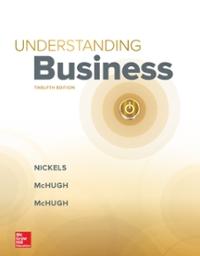Question
Let the random variable X be the payoff an investment that may involve gain (X 0) as well as loss (X < 0). (a) Show
Let the random variable X be the payoff an investment that may involve gain (X 0) as well as loss (X < 0).
(a) Show that (X) = E[X], i.e. the expected loss, is a coherent risk measure. Note here positive risk means loss.
(b) The standard deviation of X (assuming it exists), denoted as (X), is often used as a risk measure of the investment. Is (X) = (X) a coherent risk measure? If yes, prove it. If no, give counterexamples for all the violated axioms.
(c) The risk measure (X) = E[X] + (X) combines the expected loss with the spread (standard deviation) of loss. However, show that (X) is not a coherent risk measure by giving counterexamples for all the violated axioms.1
(d) Now let X be the loss, so X > 0 means loss and X 0 means gain. A widely used risk measure is the so-called Value-at-Risk (VaR). VaR of loss X with confidence level (0,1) is defined as V aR(X) = min{z|P(X z) }, where FX(z) = Pr(X z) is the cumulative distribution function of X. In other words, V aR(X) is the lower -percentile of X. Suppose X is a random loss uniformly distributed on [-$10, $50]. Compute V aR(X) as a function of . Now suppose the loss X is an exponential random variable with density f(x) = ex for x 0. Calculate the V aR(X) as a function of , .
(e) Although VaR has its intuitive appeal, it has serious drawbacks. First, show that V aR(X) is not a coherent risk measure by giving examples of random variable X whose VaR violates axioms. Second, the VaR is usually computationally difficult to evaluate.
(f) Another very popular risk measure is called the conditional-value-at-risk (CVaR). CVaR of loss X with confidence level (0,1) is defined as CV aR(X) = E[X|X V aR(X)] i.e. it is the expected loss X conditional on that the loss is at least V aR(X). By definition, CVaR is larger than VaR. So if we can minimize CVaR, then automatically VaR is also minimized. It turns out that CVaR is a coherent risk measure. However, proving this is not trivial. Calculate CV aR(X) for the uniform and exponential distributions in (d). You need to write down the explicit forms of CVaR.
Step by Step Solution
There are 3 Steps involved in it
Step: 1

Get Instant Access to Expert-Tailored Solutions
See step-by-step solutions with expert insights and AI powered tools for academic success
Step: 2

Step: 3

Ace Your Homework with AI
Get the answers you need in no time with our AI-driven, step-by-step assistance
Get Started


